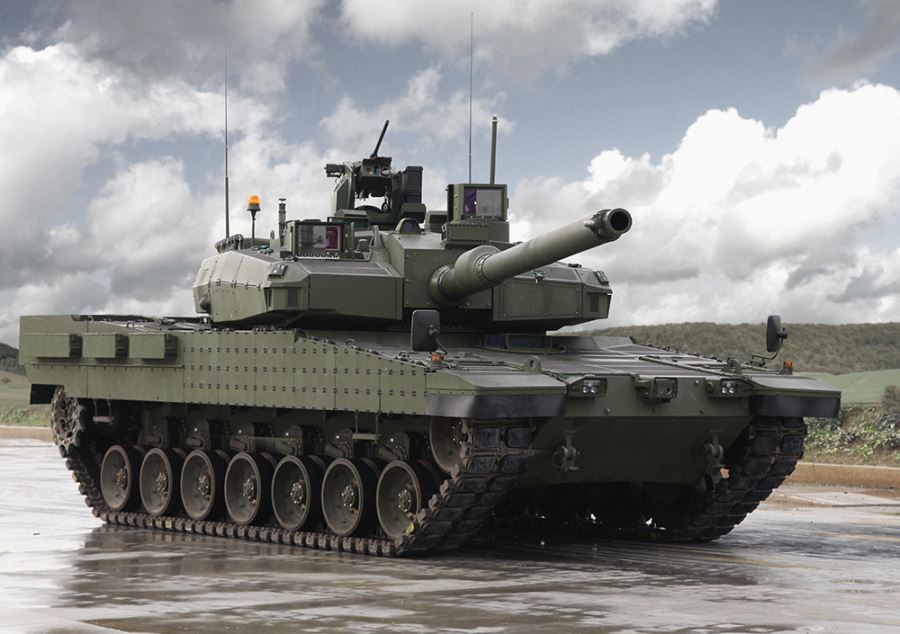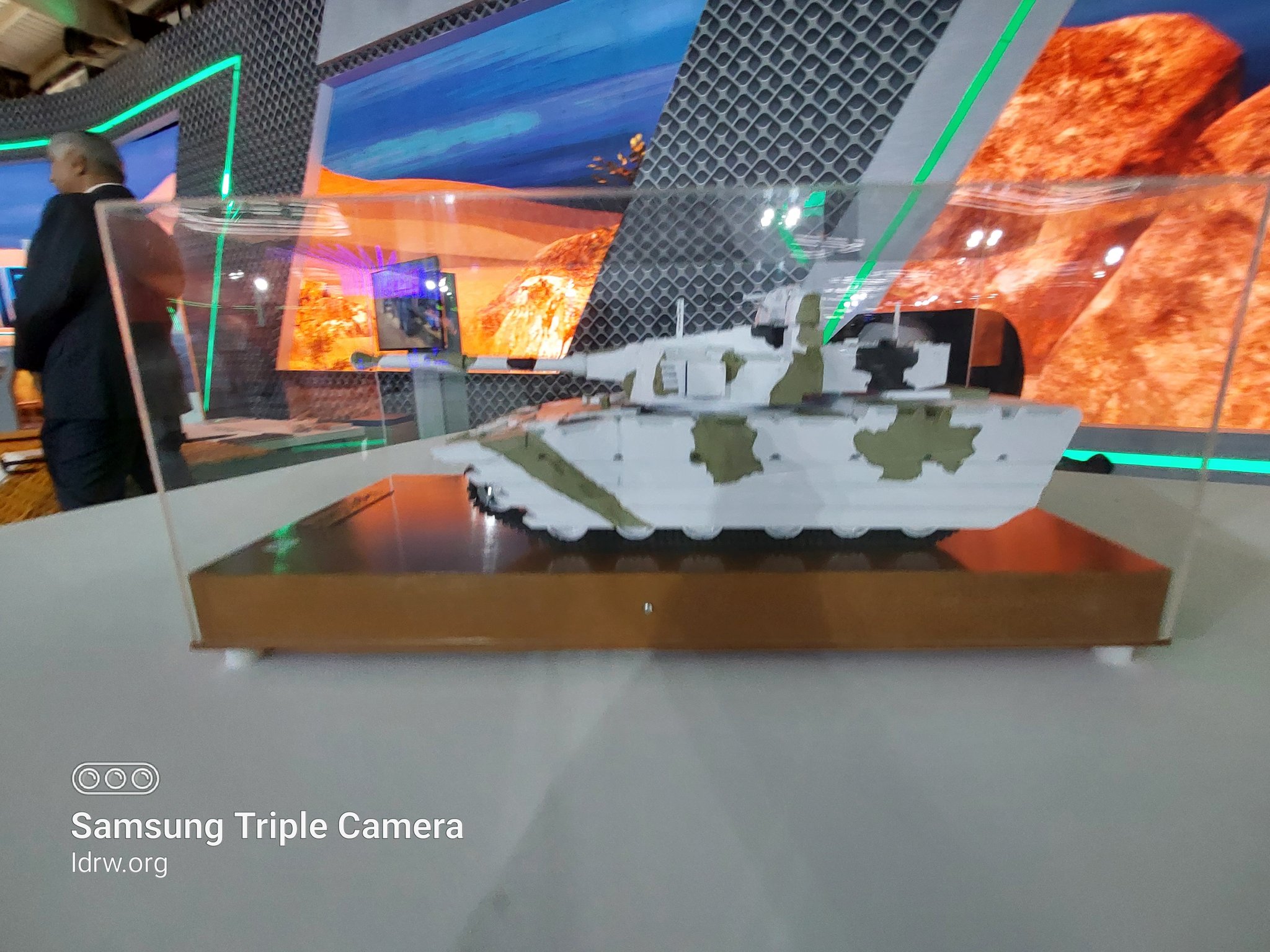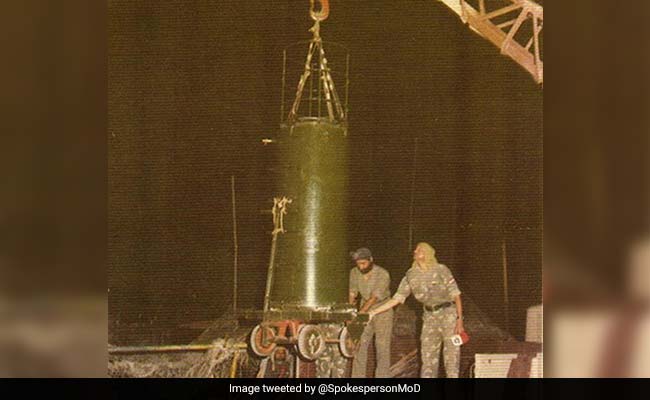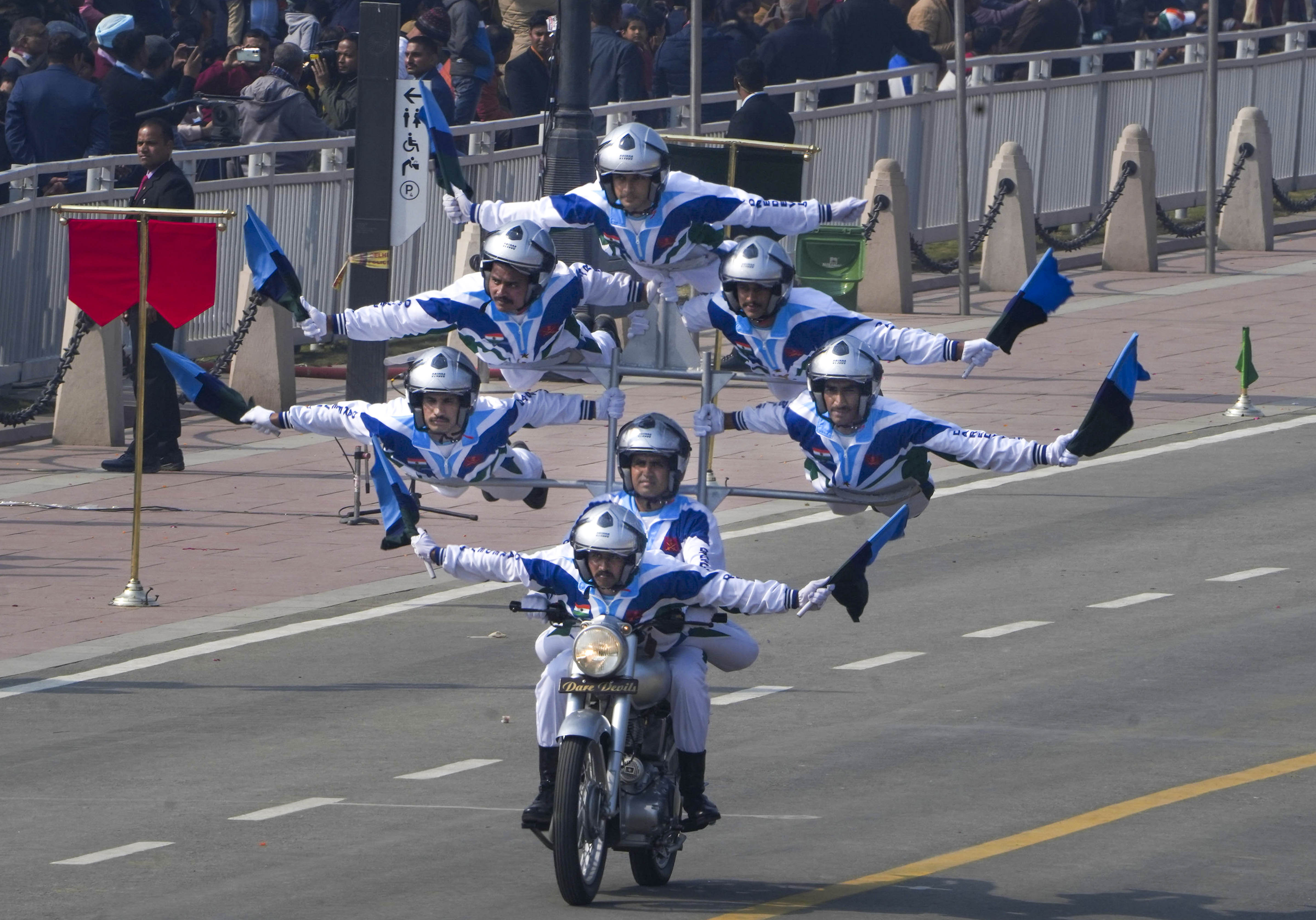SOURCE: AFI

India’s decision to retire its aging MiG-27 fleet and not replace them with the Russian Su-34 Fullback, despite already operating a significant number of Su-30MKIs, has been a subject of considerable discussion in defense circles. The rationale behind this decision is multi-faceted, involving operational, financial, and strategic considerations.
The Su-34 is a formidable strike aircraft with impressive capabilities, including a heavy payload capacity, advanced avionics, and long-range precision strike capability. However, India’s operational requirements were already being met effectively by the Su-30MKI, a versatile and multi-role aircraft that can perform both air-to-air and air-to-ground missions. The Su-30MKI, with its robust performance in various roles, reduced the need for a dedicated strike aircraft like the Su-34.
Continue readingSOURCE: AFI

The Indian Navy is fortifying its aerial defense capabilities with INS Dega, a key naval air station located in Visakhapatnam, Andhra Pradesh, on the east coast of India. This strategic facility is set to become the home base for a squadron of 26 Rafale M fighter jets, bolstering India’s maritime prowess.
Dassault Aviation, the French aerospace giant, is supplying the Indian Navy with these advanced fighter jets. The order comprises:
Continue readingSOURCE: IDRW.ORG.

The Defence Research and Development Organisation (DRDO) is on the verge of unveiling a new weapon in its arsenal – the STAR supersonic target drone. Scheduled for testing later this year, STAR promises to revolutionize the way India trains its naval crews to combat modern anti-ship missile threats.
STAR, or Supersonic Target for Anti-Radiation, is designed to mimic the characteristics of modern anti-ship missiles. Capable of achieving speeds exceeding Mach 2.4, STAR will allow naval personnel to hone their skills in detecting and defeating these high-velocity threats.
Continue readingSOURCE: IDRW.ORG.

India’s Defence Research and Development Organisation (DRDO) has announced the successful design and development of a compact spaceborne hyperspectral imaging payload, according to industry partner Paras Defence. The payload is slated for launch by September 2024.
Hyperspectral imaging technology captures detailed information across a wide range of wavelengths, providing a more comprehensive picture compared to traditional cameras. This advanced technology has numerous applications, including earth observation, resource mapping, environmental monitoring, and disaster management.
Continue readingSOURCE: AFI

Yeni Akit, an Islamist Turkish daily newspaper proudly proclaims the arrival of Turkey’s first indigenous main battle tank, the Altay, alleging it has caused panic amongst neighboring countries. The article cites Indian media outlets discussing the Altay’s capabilities and supposedly advocating for an alliance with Greece to counter this new Turkish advancement.
Yeni Akit portrays Greece as envious of Turkey’s flourishing defense industry, claiming Greece views every Turkish development with apprehension. The piece quotes an unnamed Indian report expressing concern over Turkey’s newfound self-sufficiency in tank production and the potential impact on the regional balance of power.
Continue readingSOURCE: AFI

Hindustan Aeronautics Limited (HAL) is gearing up for mass production of the LCH Prachand light attack helicopter, following a Ministry of Defence (MoD) request for a proposal (RFP) for 156 units. This move signifies a significant push towards self-reliance in India’s defense sector.
While the initial 15 Limited Series Production (LSP) LCHs had an indigenous content of 45% by value, HAL aims to significantly increase this figure to 55% for the series production variant. This ambitious target reflects India’s commitment to reducing dependence on foreign suppliers for critical defense equipment.
Continue readingSOURCE: AFI

Nishant Agrawal, a former BrahMos scientist, was sentenced to life imprisonment by a sessions court for leaking military secrets to Pakistan. Agrawal, who worked in the missile assembly unit in Nagpur, was a distinguished missile engineer until his arrest. The court convicted him under Section 235 of the Criminal Procedure Code, finding him guilty of offences punishable under Section 66(f) of the IT Act and various sections of the Official Secrets Act (OSA) for divulging critical armament information to foreign entities.
The investigation, led by Pankaj Awasthi of the Uttar Pradesh Anti-Terrorism Squad (UP-ATS), uncovered a sophisticated espionage operation. During the trial, Awasthi testified that a Pakistani agent using the pseudonym ‘Sejal’ had established a Facebook account to connect with Agrawal. This account was used to deploy malicious applications such as Qwhisper, Chat to Hire, and X-trust. These apps, laden with malware, successfully infiltrated Agrawal’s laptop, extracting classified information.
Continue readingSOURCE: AFI

The issue of Kashmir, long a point of contention between India and Pakistan, has now permeated British politics, with parliamentary candidates seeking the support of the British Pakistani community by addressing the Kashmir conflict. Conservative MP Marco Longhi is among those urging the British Pakistani electorate to vote for him in the upcoming elections, leveraging his stance on Kashmir as a key campaign point.
The UK is set to go to the polls on July 4, with the Conservative Party, led by Rishi Sunak, facing a significant challenge. In a recent letter coinciding with Eid al-Adha, Longhi emphasized his commitment to advocating for the people of Kashmir, highlighting the Indian government’s “atrocities” in the region. He posed the question, “Who will speak for Kashmir in Parliament?” in an attempt to rally support from voters who are deeply concerned about the ongoing conflict.
Continue readingSOURCE: RAUNAK KUNDE / NEWS BEAT / IDRW.ORG

Dr. Samir V. Kamat, Secretary of Defence Research and Development (DD R&D) and Chairman of the Defence Research and Development Organisation (DRDO), has provided a significant update on India’s ambitious Light Tank program.
According to Dr Kamat, the internal development trials for the Light Tank, which began earlier this year, are expected to conclude within the next one to one and a half years. Following these trials, the tank will be offered to the Indian Army for user trials, with hopes for induction by 2027.
Continue readingSOURCE: RAUNAK KUNDE / NEWS BEAT / IDRW.ORG

Armenia is expanding its defence procurement strategy by looking to secure a wider array of military products from India, including advanced military drones and midrange surface-to-air missiles. As reported by idrw.org, Armenia has already acquired the Akash 1S Surface-to-Air Defense System and is considering additional systems such as the Indo-Israeli Medium-Range Surface-to-Air Missile (MR-SAM) and the Akash-NG Medium-Range Surface-to-Air Defense System.
While India is yet to commence the delivery of the Akash 1S system to Armenia, these deliveries are expected to begin next year. The Akash 1S is a sophisticated air defence system capable of targeting aircraft up to 30 km away, providing a robust shield against aerial threats.
Continue readingSOURCE: RAUNAK KUNDE / NEWS BEAT / IDRW.ORG

The Stockholm International Peace Research Institute (SIPRI) has released its annual assessment of nuclear weapons across the nine nuclear-armed states: the United States, Russia, the United Kingdom, France, China, India, Pakistan, North Korea, and Israel. According to SIPRI’s latest report, India’s nuclear weapons inventory is estimated to be around 172 stored warheads, including its military stockpile. This represents an increase of eight warheads from the 2023 estimate of 164 units.
For the first time in over two decades, SIPRI estimates that India’s nuclear stockpile exceeds that of Pakistan. The 2024 estimate positions Pakistan’s nuclear arsenal at approximately 170 warheads. This development marks a significant milestone in the regional nuclear dynamics between the two neighboring countries. Notably, India’s nuclear inventory does not include tactical nuclear weapons, which are designed for use on the battlefield and are a key component of Pakistan’s nuclear strategy.
Continue readingSOURCE: IDRW.ORG

Mishra Dhatu Nigam Limited (MIDANI), an Indian state-owned company, is in discussions with Pratt & Whitney, a leading manufacturer of aircraft engines, for the potential supply of engine components.
Pratt & Whitney engines are ubiquitous in the aviation industry, powering both commercial airliners and military aircraft. While specific details regarding the components under discussion haven’t been disclosed by MIDANI due to ongoing negotiations, the potential partnership holds significant weight.
Continue readingSOURCE: IDRW.ORG

Pakistan Ordnance Factories (POF), a long-time supplier of small arms and ammunition, is facing stiff competition from India’s growing arms industry. This shift threatens POF’s market share, particularly in the Arab Gulf and Africa, where they traditionally held dominance.
For years, POF enjoyed a stable market of around $100 million annually. However, recent reports suggest a decline in sales due to concerns about ammunition quality. High rates of failure in Pakistani ammo have led traditional customers to seek alternatives.
Continue readingSOURCE: AFI

Kuan-Ting Chen, a member of Taiwan’s Legislative Yuan representing Chiayi County, expressed optimism following Indian Prime Minister Narendra Modi’s response to President Tsai Ing-wen’s congratulations on his election victory. Chen, in a statement, viewed this exchange as a potential turning point for Taiwan-India relations.
“This marks a new chapter in Taiwan-India relations,” Chen said, highlighting his “eagerness” for cooperation between the two countries, which he considers “leading nations in AI and IT.”
Continue readingSOURCE: AFI

For decades, the Motorcycle Display Team of the Indian Army has been a cherished part of the Republic Day Parades, showcasing a blend of skill, coordination, and daring stunts. Many of us grew up in awe of these performances, which have become a nostalgic symbol of national pride. However, as India ascends on the global stage, it is time to reconsider the relevance and image projected by this tradition.
In today’s world, where military prowess is increasingly defined by technological advancements, strategic capabilities, and modern warfare tactics, the motorcycle stunts appear anachronistic. They harken back to an era where such displays were a common way to demonstrate discipline and coordination. However, as India aims to project itself as a rising global power with a focus on innovation and modernity, these stunts may send the wrong message about the priorities and image of the Indian Army.
Continue reading